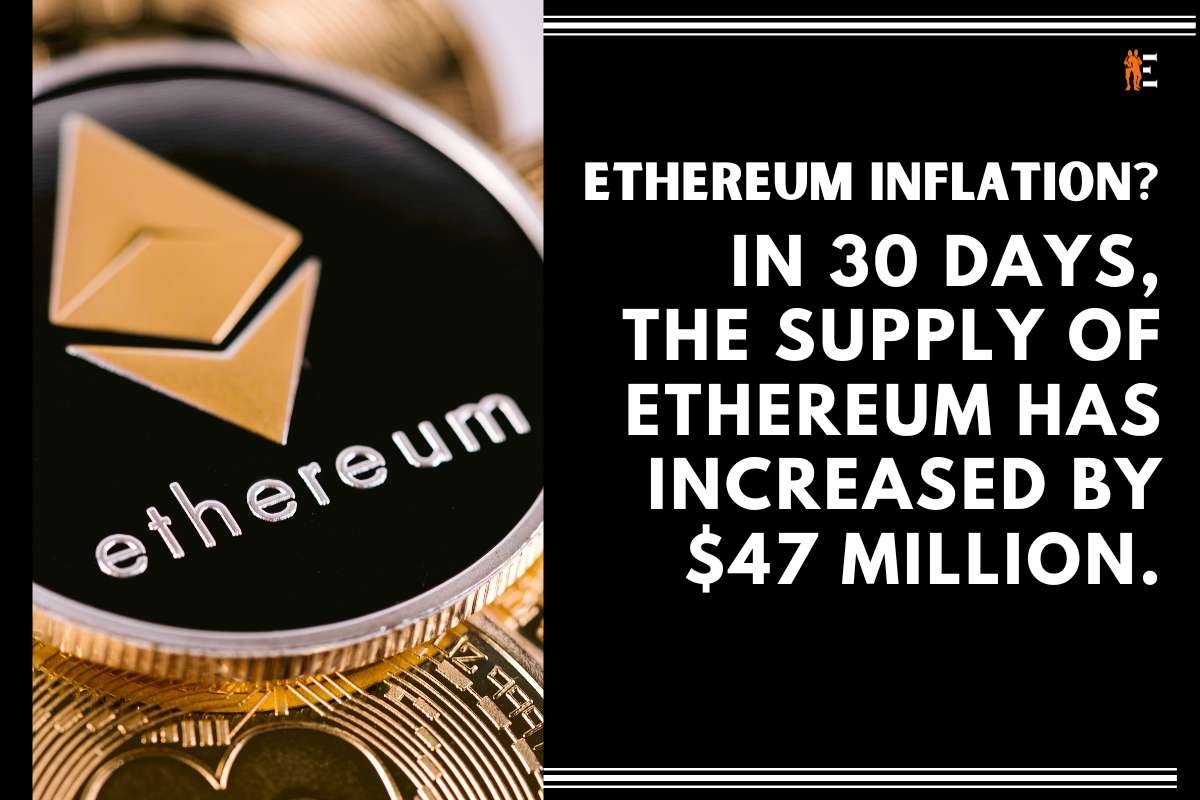The rise has mostly been driven by a similar absence of transaction activity on the blockchain network.
Last year’s merger was largely heralded by Ethereum supporters as a watershed moment that would firmly establish ETH as “ultrasound money.” Many so-called Ethereum maximalists were confident that the historic switch from proof of work to proof of stake last September would cement ETH’s reputation as a deflationary currency that would only rise in value thereafter. Things aren’t looking so certain a year later.
Ethereum’s Supply and Inflation Trends
According to data aggregator ultrasound.money, worldwide ETH supply has increased by about 30,000 ETH in the last 30 days, amounting to around $47.9 million at the time of writing. The steep increase in ETH in circulation is mostly due to an equally sharp drop in transaction traffic on the ETH network: far fewer NFT deals and far less DeFi activity.
The Ethereum network has used a fee-burning system since 2021: the more traffic on the network, the higher the gas costs (which are necessary to complete on-chain transactions). The higher the price of gas, the more ETH is “burned” or permanently removed from circulation by the network.
Ethereum gas fees have just reduced dramatically—an average network transaction now costs 7 gwei, or $0.24. On the NFT marketplace OpenSea, the typical transaction costs around $0.94. In comparison, during the auction of Yuga Labs’ Otherside collection last May, network users burnt nearly $157 million in Ethereum to mint just 55,000 virtual land deed NFTs: an average of $2,854 in fees alone per transaction.
Ethereum Community’s Reaction to Recent Inflation
While reduced gas fees are beneficial to the typical ETH user, they also result in the burning of fewer ETH—and consequently increases in global ETH supply.
Ethereum’s recent inflationary trend has generated significant alarm among crypto users and investors, who believe that current patterns could jeopardize the network’s long-term financial sustainability. However, the ETH team appears to be unfazed by the development.
“I suspect that none of the core developers care,” Micah Zoltu, an ETH core engineer, told Decrypt of his colleagues’ thoughts on the matter. “If you look at the grand scheme of things, it is insignificant.”
Danno Ferrin, another Ethereum core engineer, stated that he was unconcerned by Ethereum’s recent inflationary surge.
“It is still below the all-time high [ETH supply],” Ferrin said to Decrypt. “And [Ethereum’s] short-term inflation is well below other chains and the economy as a whole.”
Since last year, worldwide inflation has been steadily rising; in the United States, prices increased at the fastest year-over-year rate since 1981 in June. In reaction to this economic environment, the Federal Reserve of the United States has regularly hiked interest rates, causing the value of cryptocurrencies such as Bitcoin and ETH to fall.











